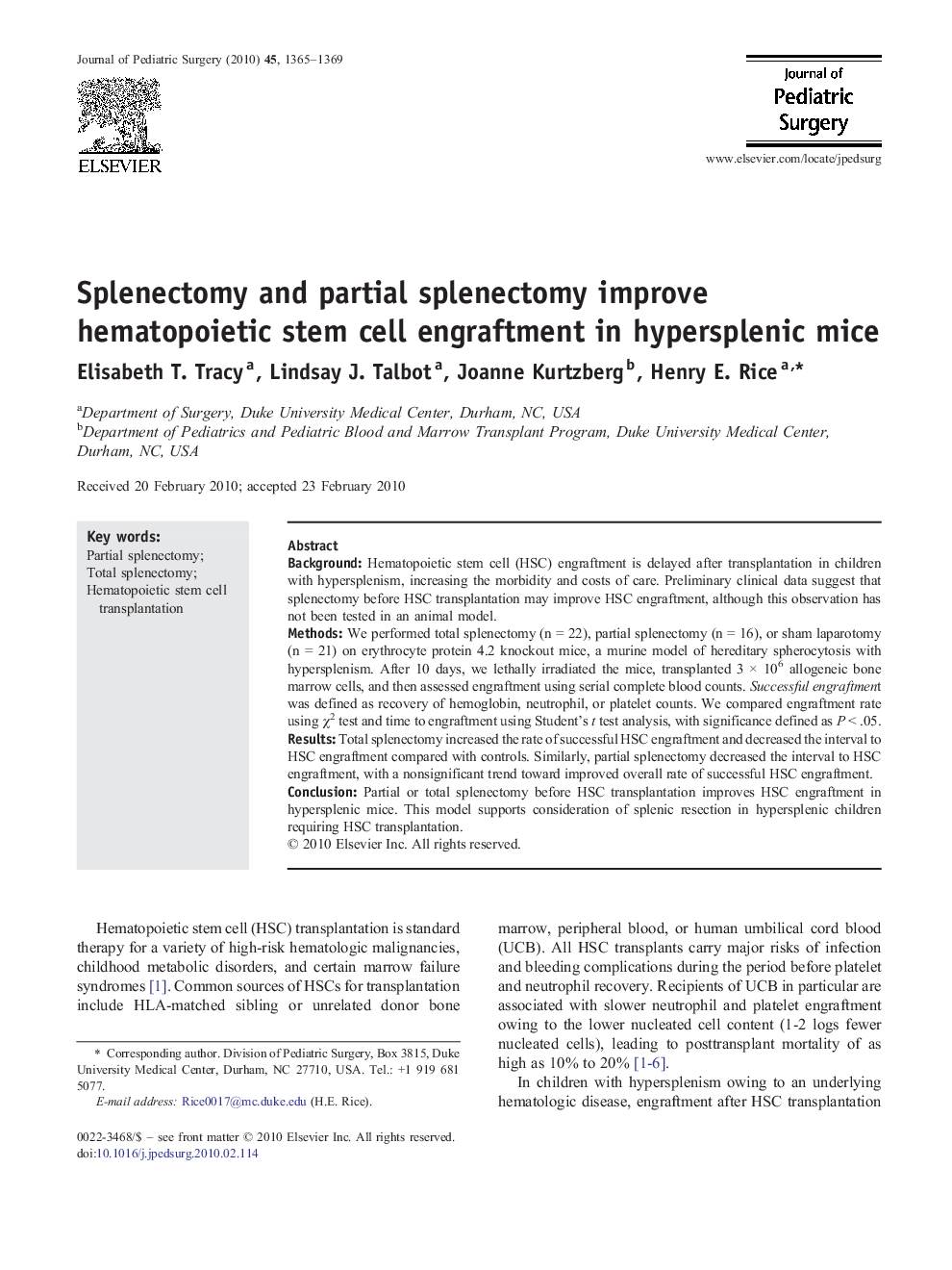| Article ID | Journal | Published Year | Pages | File Type |
|---|---|---|---|---|
| 4157525 | Journal of Pediatric Surgery | 2010 | 5 Pages |
BackgroundHematopoietic stem cell (HSC) engraftment is delayed after transplantation in children with hypersplenism, increasing the morbidity and costs of care. Preliminary clinical data suggest that splenectomy before HSC transplantation may improve HSC engraftment, although this observation has not been tested in an animal model.MethodsWe performed total splenectomy (n = 22), partial splenectomy (n = 16), or sham laparotomy (n = 21) on erythrocyte protein 4.2 knockout mice, a murine model of hereditary spherocytosis with hypersplenism. After 10 days, we lethally irradiated the mice, transplanted 3 × 106 allogeneic bone marrow cells, and then assessed engraftment using serial complete blood counts. Successful engraftment was defined as recovery of hemoglobin, neutrophil, or platelet counts. We compared engraftment rate using χ2 test and time to engraftment using Student's t test analysis, with significance defined as P < .05.ResultsTotal splenectomy increased the rate of successful HSC engraftment and decreased the interval to HSC engraftment compared with controls. Similarly, partial splenectomy decreased the interval to HSC engraftment, with a nonsignificant trend toward improved overall rate of successful HSC engraftment.ConclusionPartial or total splenectomy before HSC transplantation improves HSC engraftment in hypersplenic mice. This model supports consideration of splenic resection in hypersplenic children requiring HSC transplantation.
